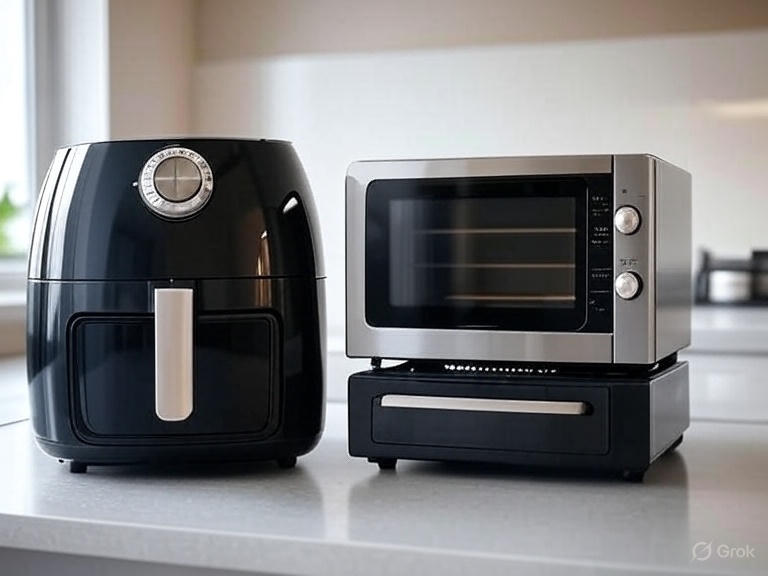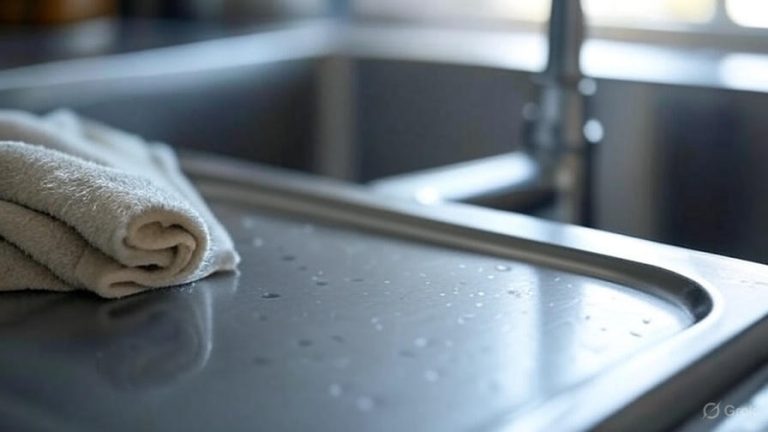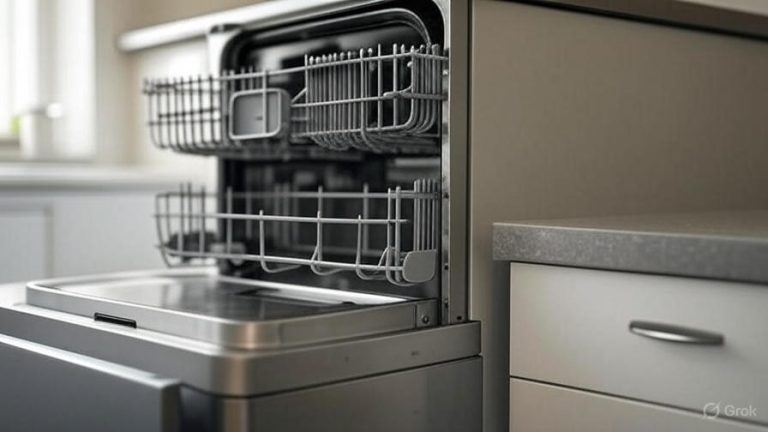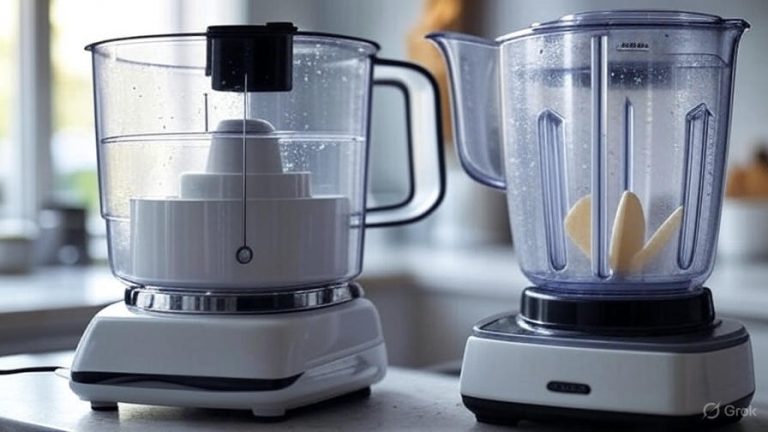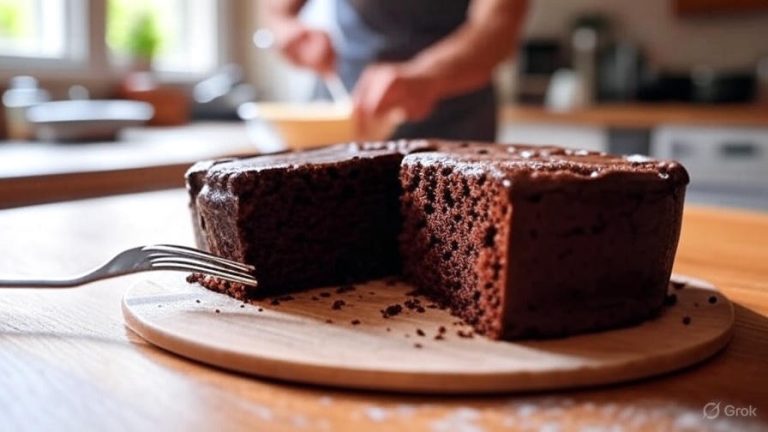How Are Air Fryers Different From Convection Ovens
Home cooks everywhere face the same kitchen dilemma: should they invest in an air fryer or stick with a convection oven? Both appliances promise crispy, delicious results, but they work in surprisingly different ways. Understanding these differences helps you make the right choice for your cooking style, kitchen space, and budget.
The Science Behind Hot Air Cooking
Air fryers and convection ovens both use circulating hot air to cook food, but their methods create distinct cooking experiences. A convection oven moves heated air around food using internal fans, creating even heat distribution throughout a larger cooking chamber. This gentle circulation cooks food evenly while maintaining moisture levels.
Air fryers take this concept and intensify it dramatically. These compact appliances force hot air to circulate rapidly in a small space, creating a powerful convection effect. The concentrated airflow reaches speeds up to 30% faster than traditional convection ovens, producing that coveted crispy exterior we all love.
The key difference lies in air velocity and chamber size. Air fryers create a tornado-like effect in their compact baskets, while convection ovens provide steady, even airflow across larger cooking areas. This fundamental difference affects cooking times, texture, and the types of foods each appliance handles best.
Size and Capacity: Small Batches vs Family Meals
Counter space becomes a major consideration when choosing between these appliances. Air fryers typically measure 12-16 inches wide and fit comfortably on most countertops. Their compact design makes them perfect for small kitchens, apartments, or as supplementary cooking tools.
Convection ovens come in various sizes, from countertop models similar to air fryers to full-sized wall units. A standard countertop convection oven offers 0.5 to 1.0 cubic feet of cooking space, while air fryers usually provide 1-10 quarts of capacity. This size difference directly impacts meal planning and cooking flexibility.
Single-person households or couples often find air fryers perfectly sized for their needs. The smaller cooking chamber heats up quickly and efficiently cooks portions for one to three people. Families with four or more members typically benefit from convection ovens, which handle larger batches of food simultaneously.
Consider your typical cooking scenarios. Do you often prepare meals for large groups? A convection oven’s spacious interior accommodates multiple dishes at once. Do you prefer cooking smaller portions throughout the day? An air fryer’s quick heating and cooking cycles suit this approach perfectly.
Cooking Speed: Fast Results vs Steady Performance
Time-conscious cooks appreciate air fryers’ impressive speed advantages. Most air fryers preheat in 2-3 minutes compared to 10-15 minutes for convection ovens. This quick startup time makes air fryers ideal for spontaneous cooking sessions or when hunger strikes unexpectedly.
Cooking times also favor air fryers for many foods. Chicken wings that require 25-30 minutes in a convection oven finish in 18-20 minutes in an air fryer. Frozen french fries cook in 8-12 minutes versus 15-20 minutes in a convection oven. These time savings add up significantly during busy weekdays.
However, convection ovens excel at longer cooking processes. Roasting a whole chicken, baking bread, or preparing casseroles benefits from the steady, even heat distribution convection ovens provide. The larger cooking chamber allows heat to circulate around food more gradually, preventing overcooking while ensuring thorough heating.
Batch cooking presents another timing consideration. Air fryers often require multiple batches to feed a family, potentially negating their speed advantage. Convection ovens handle larger quantities in single batches, making them more efficient for meal prep or entertaining.
Energy Efficiency: Power Consumption Matters
Energy costs influence long-term appliance satisfaction, and air fryers generally consume less electricity than convection ovens. Most air fryers operate on 1200-1500 watts, while countertop convection ovens typically use 1500-1800 watts. Full-sized convection ovens can consume 3000-5000 watts during operation.
The real energy savings come from reduced cooking times and faster preheating. Air fryers’ quick cooking cycles mean less overall energy consumption per meal. A 20-minute air fryer session uses significantly less electricity than a 35-minute convection oven cooking process.
Convection ovens offset some energy disadvantages through their ability to cook multiple items simultaneously. Preparing an entire meal in one appliance proves more energy-efficient than using multiple smaller appliances. Smart cooking strategies can maximize convection oven efficiency while minimizing energy waste.
Seasonal considerations also matter. Air fryers generate less ambient heat than convection ovens, keeping kitchens cooler during summer months. This reduced heat output can lower air conditioning costs and improve kitchen comfort during hot weather cooking sessions.
Food Texture and Quality: Crispy vs Versatile
Texture preferences often determine appliance choice. Air fryers excel at creating crispy exteriors on foods traditionally requiring deep frying. The intense, rapid air circulation removes surface moisture quickly, developing golden-brown crusts on chicken, fish, and vegetables.
Convection ovens provide more versatile cooking results. Their gentler heat circulation preserves moisture while still achieving browning and crisping. This balance works well for roasted meats, baked goods, and dishes requiring both crispy surfaces and tender interiors.
Reheating leftover food showcases each appliance’s strengths. Air fryers restore crispiness to previously fried foods, making day-old pizza, chicken nuggets, and french fries taste freshly cooked. Convection ovens reheat casseroles, baked dishes, and larger portions more evenly without creating hot spots.
Certain foods perform better in specific appliances. Delicate fish fillets benefit from convection ovens’ gentler heat, while breaded items achieve superior crispiness in air fryers. Understanding these preferences helps maximize cooking success with either appliance.
Versatility: Specialized vs Multi-Purpose
Convection ovens win the versatility competition hands down. These appliances bake, roast, broil, toast, and reheat with equal proficiency. Their larger cooking chambers accommodate various cookware sizes and shapes, from sheet pans to casserole dishes to roasting pans.
Air fryers specialize in specific cooking techniques but excel within their niche. They fry, roast, and reheat exceptionally well, though their small baskets limit cooking options. Some newer air fryer models include additional functions like dehydrating, but their primary strength remains crispy cooking.
Baking presents a clear distinction between appliances. Convection ovens handle full-sized cakes, bread loaves, and large batch cookies easily. Air fryers accommodate only small baking projects like muffins, individual portions, or small batches of cookies.
Temperature control and cooking precision also differ between appliances. Convection ovens typically offer more precise temperature adjustments and maintain consistent heat throughout longer cooking processes. Air fryers focus on high-heat, fast cooking with less precise temperature control.
Maintenance and Cleaning: Simple vs Thorough
Daily maintenance requirements vary significantly between appliances. Air fryers feature removable, dishwasher-safe baskets that make cleanup quick and easy. Most air fryer components clean with simple soap and water, requiring minimal scrubbing or special attention.
Convection ovens demand more thorough cleaning due to their larger size and multiple components. Interior walls, racks, and heating elements require regular attention to prevent grease buildup and maintain optimal performance. Self-cleaning functions in some models reduce manual cleaning effort.
Grease management differs between appliances. Air fryers collect grease in removable drip pans that empty and clean easily. Convection ovens may require more extensive grease cleanup, especially after cooking fatty foods or using higher temperatures.
Filter maintenance applies primarily to air fryers, though some models include replaceable or washable filters. Convection ovens typically require less filter attention but may need occasional vent cleaning to maintain proper airflow.
Cost Considerations: Initial Investment and Long-Term Value
Initial purchase prices vary widely within each appliance category. Basic air fryers start around $30-50, while high-end models reach $200-300. Countertop convection ovens range from $50-150 for basic models to $300-500 for premium features.
Long-term value calculations include energy costs, durability, and versatility. Air fryers’ lower energy consumption and specialized performance may justify their cost for frequent users. Convection ovens’ multi-functionality and larger capacity provide value for diverse cooking needs.
Replacement costs favor air fryers due to their simpler construction and lower initial investment. Convection ovens represent larger investments but typically offer longer lifespans and more comprehensive cooking capabilities.
Consider your cooking frequency and style when evaluating cost-effectiveness. Heavy users benefit from investing in higher-quality appliances that withstand frequent use. Occasional cooks might prefer budget-friendly options that meet basic needs without premium features.
Making the Right Choice for Your Kitchen
Your cooking habits, kitchen space, and household size should guide your decision between air fryers and convection ovens. Single people or couples who enjoy crispy foods and quick cooking often find air fryers perfectly suited to their needs. The compact size, fast cooking times, and easy cleanup make air fryers ideal for busy lifestyles.
Families with diverse cooking needs typically benefit more from convection ovens. The larger capacity, versatile cooking options, and ability to handle multiple dishes simultaneously make convection ovens valuable for meal preparation and entertaining.
Budget-conscious cooks should consider their primary cooking goals. Air fryers offer excellent value for specific cooking tasks, while convection ovens provide broader functionality that might replace multiple appliances. Calculate potential savings from reduced energy consumption and improved cooking efficiency.
Kitchen space constraints often determine appliance choice. Small kitchens with limited counter space favor compact air fryers, while larger kitchens can accommodate convection ovens’ bigger footprints. Consider storage options and daily usage patterns when evaluating space requirements.
The Bottom Line: Different Tools for Different Needs
Air fryers and convection ovens both deserve places in modern kitchens, but they serve different purposes. Air fryers excel at creating crispy textures quickly and efficiently in small batches. Their compact size, fast cooking times, and easy maintenance make them perfect for busy households focused on healthy, crispy cooking.
Convection ovens provide versatile cooking capabilities that handle diverse recipes and larger quantities. Their even heat distribution, spacious interiors, and multiple cooking functions make them valuable for comprehensive meal preparation and baking projects.
The best choice depends on your specific cooking needs, kitchen space, and lifestyle preferences. Many cooking enthusiasts find that both appliances complement each other perfectly, using air fryers for quick, crispy dishes and convection ovens for larger, more complex cooking projects.
Understanding these differences helps you make an informed decision that enhances your cooking experience and fits your kitchen perfectly. Whether you choose an air fryer, convection oven, or both, you’ll enjoy the benefits of circulated hot air cooking that delivers delicious, evenly cooked results every time.

